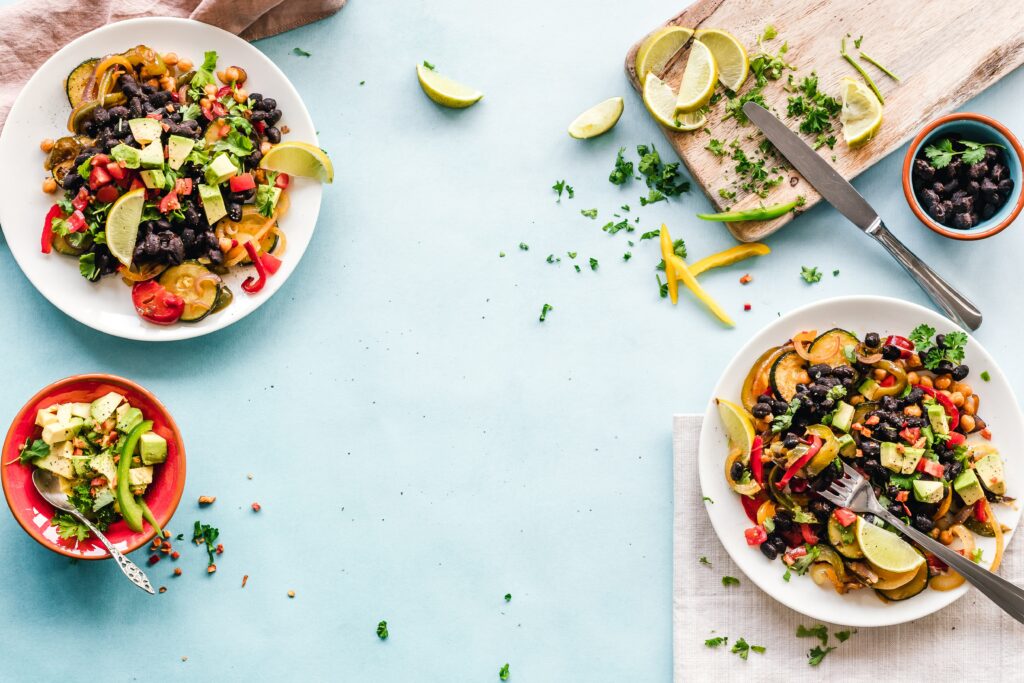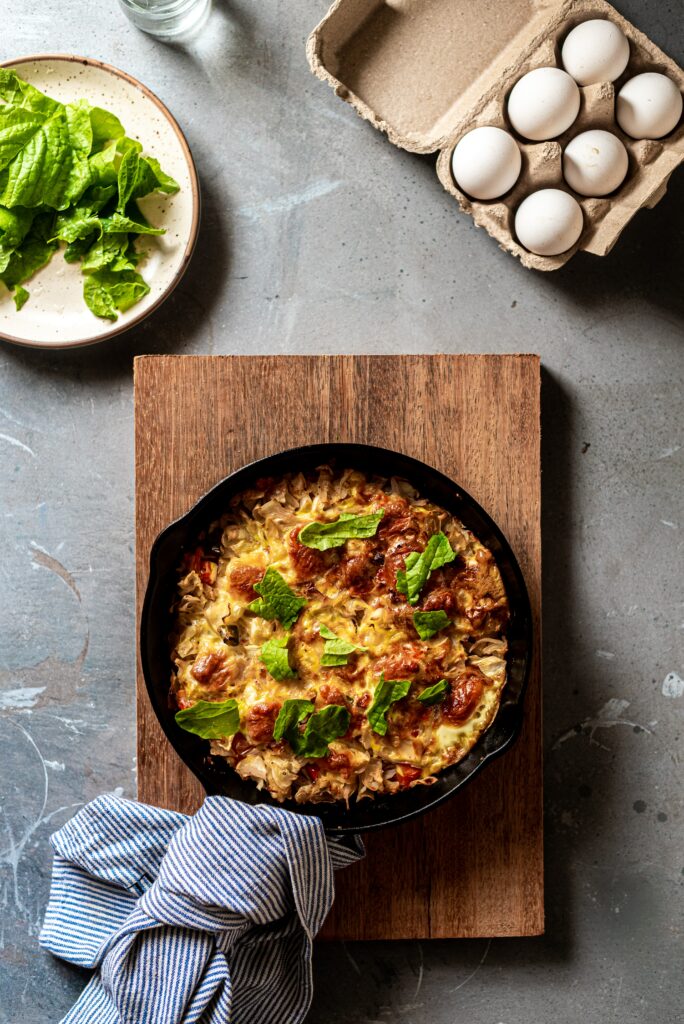How To Balance Your Body, One Bite At A Time: A Meal Plan For Hormones
Ready to kiss PMS goodbye? Feel more energized during your period? If so, it’s time to support your cycle with nutrients that truly nourish you. As menstruating women, our bodies go through a monthly dance of hormonal shifts. And what better way to honor this natural rhythm than with delicious food? Unlock the secret to balanced hormones with this menstrual cycle meal plan. It’s designed to enhance your well-being and empower you to take your health into your own hands. One delicious bite at a time, we’re diving into how to optimize your hormones. Whether you’re in a recipe rut—or want to hone in on specific nutrition tools for hormone balance—you’ve come to the right place. Bon appétit!

Use nutrition to support your hormones
When it comes to balancing hormones, proper nutrition is key. From soaring energy levels to radiant skin (and a stable mood!), hormones play a vital role in our overall well-being. Fueling with the right nutrients can make all the difference. Thanks to a colorful, well-stocked fridge, you can tap into food’s remarkable ability to transform your health. In turn, certain ingredients have the power to harmonize your endocrine system. Today, we’re delving into specific ingredients—and expert tips—for revolutionizing your hormones. A vibrant, balanced life could be a grocery basket away.

Understanding the Menstrual Cycle
Let’s begin here. The menstrual cycle is a complex process that prepares a woman’s body for pregnancy. On average, it lasts for 25-32 days. Use an app to track your cycle—this will help you determine its length! The cycle consists of four phases: menstruation, the follicular phase, ovulation, and the luteal phase. The uterine lining sheds during menstruation, and this is when a period begins. In a normal cycle, there are approximate lengths of each phase:
• Menstrual: The start of your period
• Follicular: 7-10 days leading up to ovulation
• Ovulatory: 3-5 days of ovulation
• Luteal: 10-14 days before your period starts again
Ready to live in sync with your hormones? My E-Book—Master Your Menstrual Cycle—is just the tool you need. It’s simple, straightforward, and will arm you with nutrition and lifestyle tips to balance your hormones with ease.

signs of hormone imbalance
Unfortunately, it’s estimated that over 80% of American women have an underlying hormonal imbalance. But, what does this mean—and how do you know if you have a hormone imbalance? Hormone imbalances can manifest in various signs and symptoms. Ultimately, they indicate the delicate equilibrium within the body’s endocrine system is disrupted. These signs include everything from irregular (or absent) menstrual cycles to intense PMS, unexplained weight gain, hair loss (or excessive hair growth), fatigue, and decreased libido. Additionally, hormone imbalances can manifest as hot flashes, night sweats, vaginal dryness, and bone density loss.
Note that individual experiences may vary, and consulting with a healthcare professional is advisable to accurately diagnose and address hormone imbalances.

Nutrients for Balancing the Menstrual Cycle
Whether or not you think you have a hormonal imbalance, supporting your overall menstrual health is always beneficial. Here are some key nutrients and their benefits:
Protein
Protein serves as a crucial building block for hormones. By consuming adequate high-quality protein, we ensure a steady supply of amino acids essential for producing and regulating hormones. Protein also helps stabilize blood sugar levels, promotes satiety, and aids in maintaining a healthy weight, all of which contribute to optimal hormonal function!
Iron
Iron is crucial for replenishing the blood loss during menstruation and preventing iron-deficiency anemia. Good sources of iron include spinach, lentils, lean meats, and fortified cereals.
Vitamin D
These nutrients are essential for maintaining strong bones and preventing osteoporosis. Calcium-rich foods include dairy products, leafy greens, and fortified plant-based milk. Exposure to sunlight is also important for natural vitamin D synthesis.
Omega-3 Fatty Acids
These healthy fats possess anti-inflammatory properties and can help alleviate menstrual cramps. Foods like fatty fish (salmon, mackerel), flaxseeds, chia seeds, and walnuts are excellent sources.
Magnesium
Magnesium plays a vital role in reducing muscle tension and promoting relaxation. Foods high in magnesium include dark chocolate, nuts, seeds, and whole grains.
Vitamin B6
Vitamin B6 aid in the production of serotonin, a neurotransmitter that regulates mood—particularly helpful during the luteal phase (before menstruation begins again). Bananas, chickpeas, salmon, and chicken are great sources of vitamin B6.
Fiber
A diet rich in fiber helps maintain regular bowel movements and prevents constipation (common in the days leading up to your period). Leafy greens, cruciferous veggies, fruits, seeds, and legumes are excellent sources of dietary fiber.

7 day menstrual cycle meal plan
Without further ado, below is a 7-day menstrual cycle meal plan designed to support hormonal balance and promote overall menstrual health. Keep in mind that it’s simply a starting point. Feel free to customize it according to your preferences and dietary needs (I.e. sub Greek yogurt for coconut yogurt).
Day 1
Breakfast: Bell pepper, leek, and mushroom egg (or tofu) scramble with goat cheese. Side of sourdough toast with avocado.
Snack: Protein bar.
Lunch: Leafy green salad with grilled chicken, mixed roasted vegetables, and a lemon-tahini dressing.
Snack: Dark chocolate.
Dinner: Baked salmon with roasted sweet potatoes and asparagus topped with lemon zest.
Dessert: Greek yogurt with chocolate collagen peptides, mixed berries, and pumpkin seeds.
Day 2
Breakfast: Keto chia pudding, topped with berries and almond butter.
Snack: Carrot sticks with hummus.
Lunch: Grilled chicken wrap on a sprouted wheat tortilla with avocado, micro greens, cucumber, and tomato. Side of seedy crackers.
Snack: Apple slices with a handful of walnuts.
Dinner: Lentil curry with brown rice and a side of sautéed spinach.
Dessert: Berry smoothie made with mixed berries, unsweetened almond milk, and a scoop of chocolate collagen peptides.
Day 3
Breakfast: Spinach, ham, and feta omelet. Side of sourdough toast with avocado.
Snack: A handful of trail mix (nuts, seeds, and dried apricots).
Lunch: Turkey wrap on a sprouted wheat tortilla with provolone cheese, micro greens, cucumber, and tomato. Side of seedy crackers.
Snack: Sliced cucumbers with hummus.
Dinner: Paleo egg roll in a bowl.
Dessert: Strawberries and dark chocolate.
Day 4
Breakfast: Keto chia pudding, topped with berries and almond butter.
Snack: Hard-boiled eggs with a sprinkle of salt and pepper.
Lunch: Leftover paleo egg roll in a bowl.
Snack: Roasted edamame beans.
Dinner: Simple leafy green salad and turkey sandwich with provolone cheese, dijon mustard, tomatoes, and red onion.
Dessert: Greek yogurt mixed with frozen blueberries, chia seeds, and a few drops of monk fruit.
Day 5
Breakfast: Protein pancakes with a dollop of Greek yogurt, berries, and hemp seeds. Optional: top with monk fruit-sweetened maple syrup.
Snack: Sliced apple with almond butter.
Lunch: Spinach, ham, and feta omelet. Side of sourdough toast with avocado.
Snack: Homemade energy balls with dates, nuts, and shredded coconut.
Dinner: Grilled shrimp skewers with cauliflower tabbouleh and roasted zucchini.
Dessert: Mixed fruit salad with a drizzle of honey and a sprinkle of cinnamon.
Day 6
Breakfast: Protein pancakes with a dollop of Greek yogurt, berries, and hemp seeds. Optional: top with monk fruit-sweetened maple syrup
Snack: Celery sticks with almond butter.
Lunch: Leftover grilled shrimp skewers with cauliflower tabbouleh and roasted zucchini.
Snack: Protein bar.
Dinner: Baked cod with lemon-herb sauce, roasted Brussels sprouts, and wild rice.
Dessert: Strawberries and a handful of walnuts.
Day 7
Breakfast: Keto chia pudding, topped with berries and almond butter.
Snack: Sliced bell peppers with hummus.
Lunch: Grilled chicken salad with mixed greens, cherry tomatoes, cucumber, and a balsamic vinaigrette.
Snack: Roasted chickpeas and string cheese.
Dinner: Take-out!
Dessert: Dark chocolate and a handful of walnuts.
Want specific meal plans for each phase of your cycle? Download my E-Book!

Images courtesy of Unsplash. This article is for informational purposes only. It is not, nor is it intended to be, a substitute for professional medical advice, diagnosis, or treatment and we recommend that you always consult with your healthcare provider.






